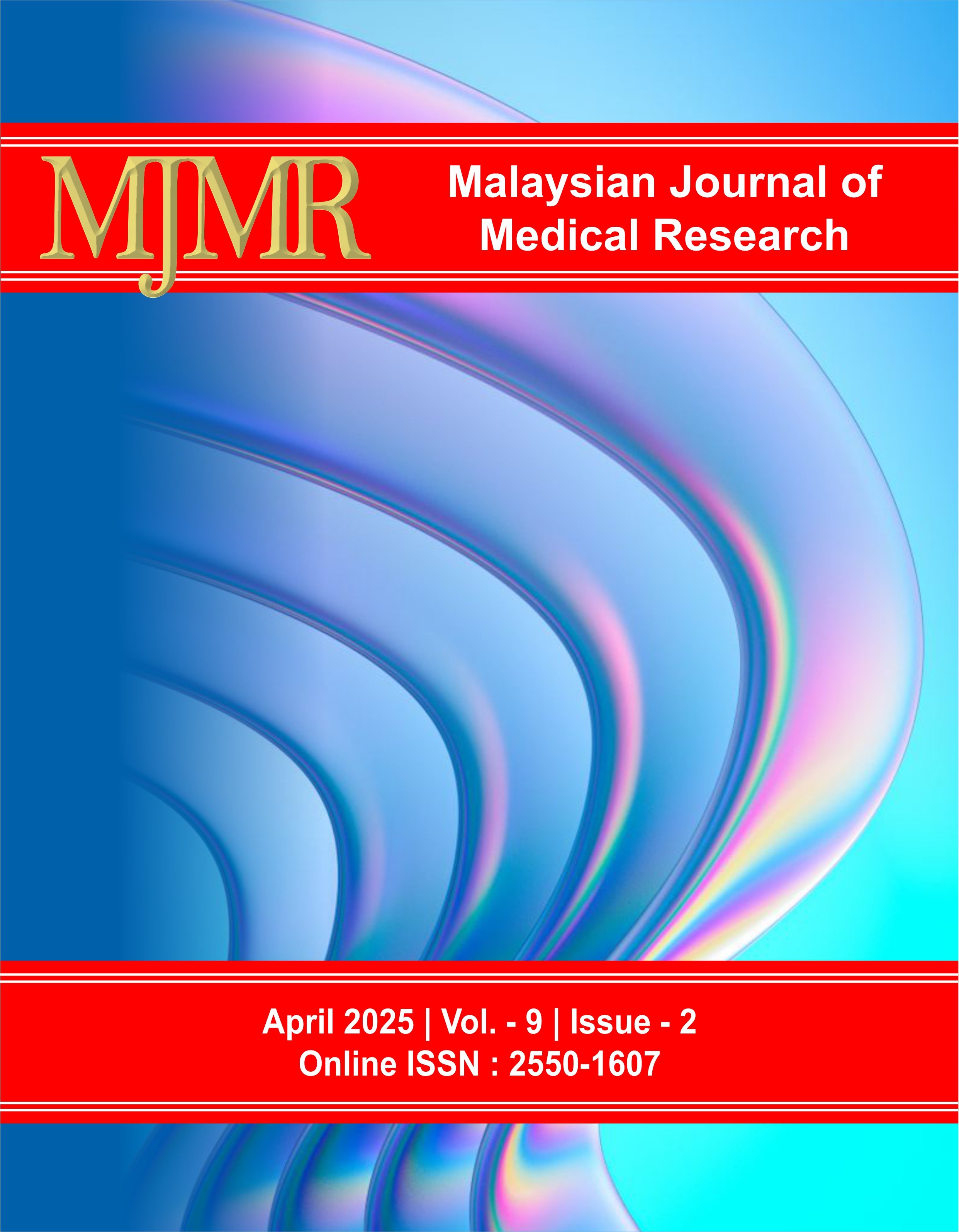Emergency Front of Neck Surgical Airway in the Emergency Department: Lessons Learnt
DOI:
https://doi.org/10.31674/mjmr.2025.v09i02.005Abstract
Securing the airway is a fundamental principle in the resuscitation of critically ill patients, as it directly influences the patient's ability to breathe and sustain life. Various national and international guidelines emphasise that airway management should take precedence over both breathing and circulation in a single-rescuer scenario, underscoring the critical nature of this step-in emergency care. In this article, it presents a case involving a patient who faced a challenging airway scenario. Despite attempts at conventional intubation, including video-assisted intubation and bronchoscopy, these methods failed to secure the airway. This prompted the need to pursue a more advanced, interventional approach: the surgical airway. This procedure, while more invasive, proved essential for ensuring the patient’s survival. Through this case, it aims to highlight the importance of preparedness and flexibility in airway management, particularly in high-risk environments like the emergency department. The lessons learned from this scenario reinforce the need for healthcare providers to be well-trained in both basic and advanced airway management techniques. Additionally, it underscores the significance of timely decision-making and the ability to adapt when standard methods are not effective. By sharing this case, that hope to contribute to a broader understanding of the critical role that surgical airways can play in emergency care and enhance the collective knowledge and preparedness of emergency medical teams.
Keywords:
Emergency Medicine, FONA, Front of Neck Airway, Surgical AirwayDownloads
References
Apfelbaum, J. L., Hagberg, C. A., Caplan, R. A., Blitt, C. D., Connis, R. T., Nickinovich, D. G., ... & Ovassapian, A. (2013). Practice guidelines for management of the difficult airway: an updated report by the American Society of Anesthesiologists Task Force on Management of the Difficult Airway. Anesthesiology, 118(2), 251-270. https://doi.org/10.1097/aln.0b013e31827773b2
Chrimes, N. (2016). The Vortex: a universal ‘high-acuity implementation tool'for emergency airway management. BJA: British Journal of Anaesthesia, 117(suppl_1), i20-i27. https://doi.org/10.1093/bja/aew175
Cook, T. M., Woodall, N., Frerk, C. O., & Fourth National Audit Project. (2011). Major complications of airway management in the UK: results of the Fourth National Audit Project of the Royal College of Anaesthetists and the Difficult Airway Society. Part 1: anaesthesia. British journal of anaesthesia, 106(5), 617-631. https://doi.org/10.1093/bja/aer058
Frerk, C., Mitchell, V. S., McNarry, A. F., Mendonca, C., Bhagrath, R., Patel, A., ... & Ahmad, I. (2015). Difficult Airway Society 2015 guidelines for management of unanticipated difficult intubation in adults. BJA: British Journal of Anaesthesia, 115(6), 827-848. https://doi.org/10.1093/bja/aev371
Galway, U., Wang, M., Deeby, M., Zura, A., Riter, Q., & Abdelmalak, B. (2023). Recognition and management of the difficult airway—a narrative review and update on the latest guidelines. Journal of Oral and Maxillofacial Anesthesia, 2. https://doi.org/10.21037/joma-23-3
Higgs, A., McGrath, B. A., Goddard, C., Rangasami, J., Suntharalingam, G., Gale, R., ... & Society, D. A. (2018). Guidelines for the management of tracheal intubation in critically ill adults. British journal of anaesthesia, 120(2), 323-352. https://doi.org/10.1016/j.bja.2017.10.021
Lewis, S. R., Butler, A. R., Parker, J., Cook, T. M., Schofield-Robinson, O. J., & Smith, A. F. (2017). Videolaryngoscopy versus direct laryngoscopy for adult patients requiring tracheal intubation: a Cochrane Systematic Review. BJA: British Journal of Anaesthesia, 119(3), 369-383. https://doi.org/10.1093/bja/aex228
Oh, D. (2019). Unexpected difficult airway caused by prior wide neck surgery. Saudi journal of anaesthesia, 13(2), 144-145. https://doi.org/10.4103/sja.SJA_581_18
Price, T. M., & McCoy, E. P. (2019). Emergency front of neck access in airway management. BJA education, 19(8), 246-253. https://doi.org/10.1016/j.bjae.2019.04.002
Published
How to Cite
Issue
Section
License
Copyright (c) 2025 Malaysian Journal of Medical Research (MJMR)

This work is licensed under a Creative Commons Attribution-NonCommercial-NoDerivatives 4.0 International License.























